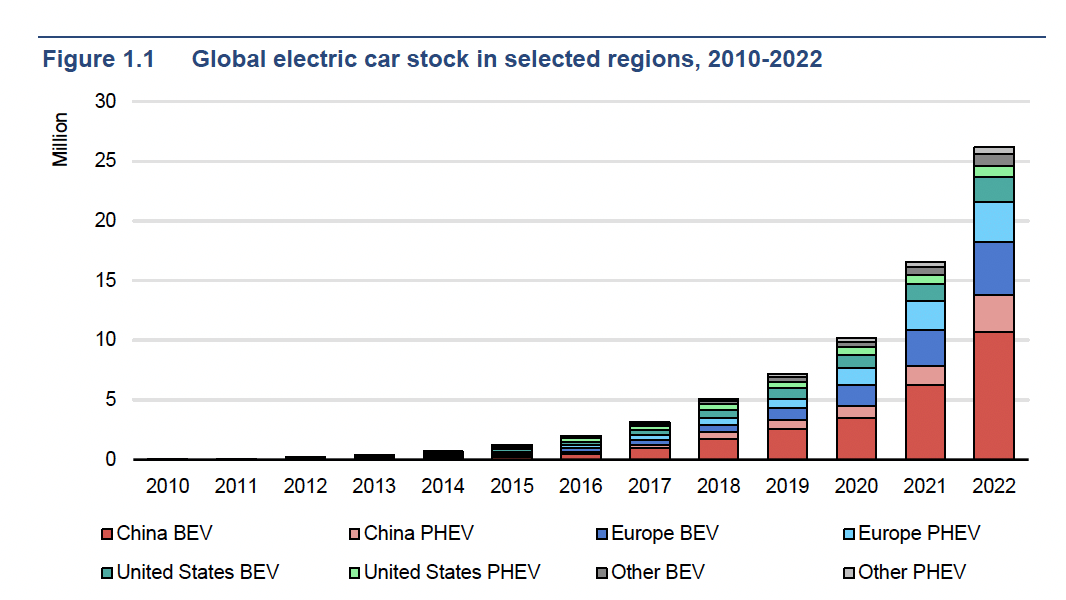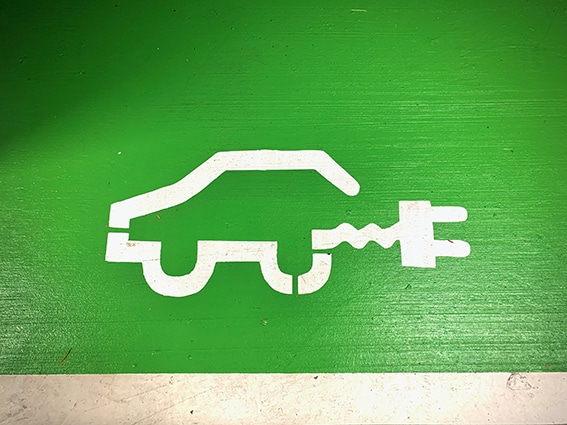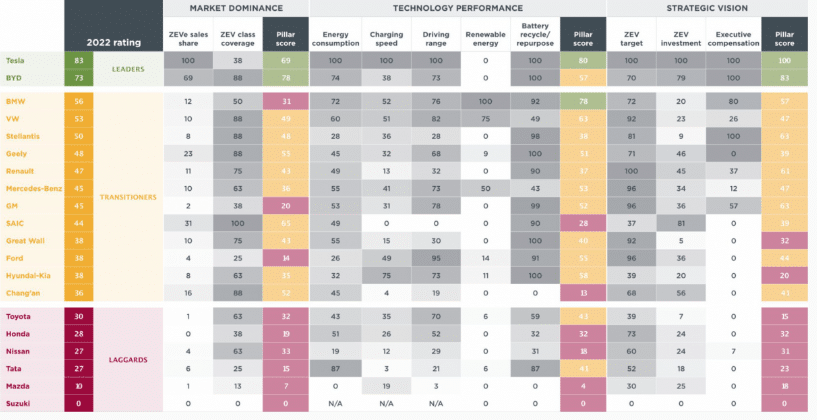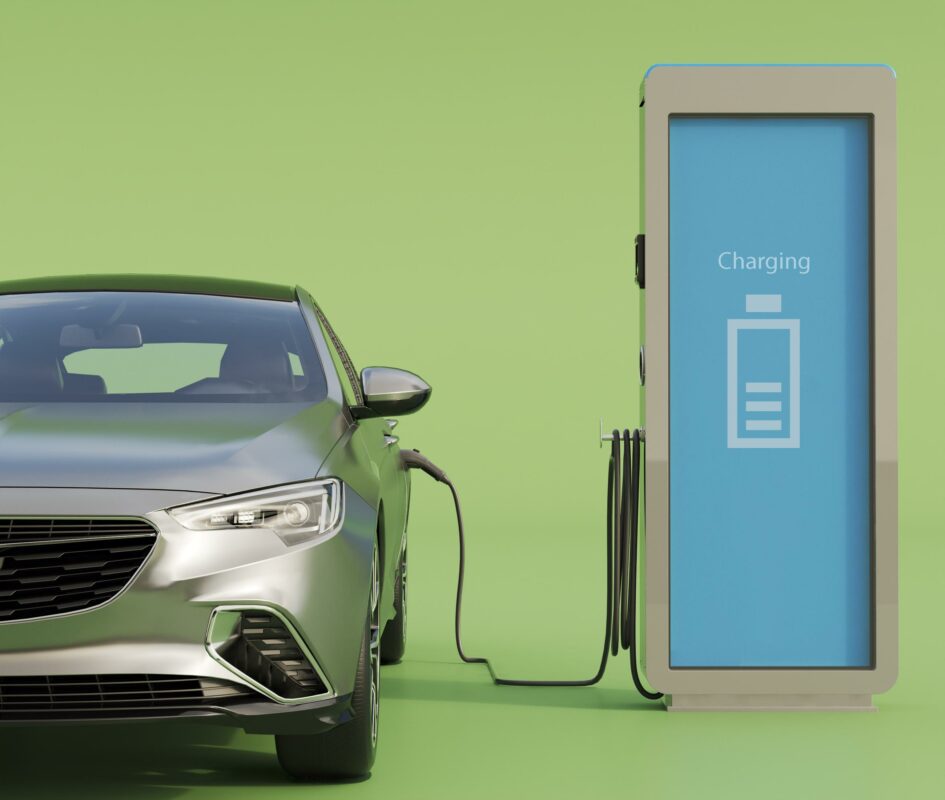“The European climate law makes reaching the EU’s climate goal of reducing EU emissions by at least 55 percent by 2030 a legal obligation. EU countries are working on new legislation to achieve this goal and make the EU climate-neutral by 2050.”
“The European climate law makes it mandatory to meet the EU’s climate target of reducing EU emissions by at least 55 percent by 2030. EU countries are working on new legislation to achieve this goal and make the EU climate neutral by 2050.”
Sommario
- 1 Electric car sales: exponential growth in 2022
- 2 Spatial trends: Europe at the forefront
- 3 The Chinese market
- 4 Environmental impact and sustainability
- 5 Chiedi informazioni e ti contatteremo
- 6 Charging infrastructure: a key to the future
- 7 Future projections: toward universal electric mobility
- 8 The example of Stellantis
- 9 Innovations in the battery industry
- 10 The 5 key factors for the expansion of electric cars in the world
- 11 An unstoppable revolution
- 12 Chiedi informazioni e ti contatteremo
- 13 Why choose Fastbrain
- 14 Contact us for a free consultation
European Green Deal | Fit for 55
The spread of electric cars worldwide traces a definite political will aimed at the sustainability of vehicles and infrastructure .
Forecasts speak of 14 million green vehicles sold worldwide by 2023.
This is according to the IEA’s Global Electric Vehicle Outlook 2023* report, which shows that a share of e-cars will reach nearly one-fifth of the global automotive market.
Let’s take a closer look at the current electric vehicle situation, emerging trends, and future plans.
Electric car sales: exponential growth in 2022
The year 2022 was marked by exceptional growth in electric car sales worldwide.
According to a report by EV-Volumes, global sales of electric vehicles increased +55 percent year-on-year to a total of 10.5 million new battery electric vehicles (BEVs) and plug-in hybrid electric vehicles (PHEVs).
An increase that represents not only major progress over past years, but also signals a rapid transition to a low-carbon and more sustainable future.

Image source: Global Electric Vehicle Outlook 2023
Spatial trends: Europe at the forefront
Europe has emerged as a major market for e-cars, with steady growth in recent years.
Despite the challenges imposed by the COVID-19 pandemic and component shortages, the European territory has seen a +15% increase in electric car sales in 2022.
A positive trend that can be attributed to government incentives, increased environmental awareness and growing charging infrastructure.
However, the EU is still facing obstacles regarding battery supply and emission reduction, which are necessary to achieve sustainability goals.
The Chinese market
China has emerged as a major driving force in the electric car industry, overcoming obstacles such as the real estate crisis and the effects of the pandemic. Sales of new energy vehicles (NEVs) in China grew an impressive 82 percent in 2022, demonstrating the resilience of the market.
Manufacturers such as BYD have tripled their sales, while Tesla has maintained strong leadership in BEVs.
In addition, China is making massive investments in the production and promotion of electric cars, with ambitious goals for the transition to electric mobility.
Environmental impact and sustainability
The rise of electric cars is driven primarily by the need to reduce air pollution and greenhouse gas emissions.
How do incentives work in Italy? We explain it in this articleAn International Energy Agency (IEA) report shows that 1 of every 7 cars sold in the world today is electric. In 2021, e-cars were 1 in 10.
And again, a World Economic Forum study found that by 2030, electric vehicles could account for 30 percent of all new sales, contributing significantly to global emissions reductions.
Returning to Europe, the WEF 2023 meeting in Davos revealed that in Norway, 79 percent of new registrations are electric, which is also achieved by the massive distribution of charging stations (16,000 public charging points).
In addition, the Center for Climate and Energy Solutions pointed out that large-scale adoption of electric cars could lead to a reduction of more than 1 giga ton ofCO2 emissions by 2050.
These environmental benefits are prompting governments around the world to promote electric mobility through incentives and supportive policies.
Charging infrastructure: a key to the future
The expansion and adoption of electric mobility is tied to the presence of efficient and accessible charging stations.
The Global EV Outlook emphasized the importance of a widespread charging infrastructure to foster large-scale adoption of e-cars.
Although some countries have made significant progress in this area, there is still a need for investment and coordinated efforts to create a global network of charging stations.
Future projections: toward universal electric mobility
Projections for the future of electric cars are ambitious and promising. According to the International Energy Agency, up to 145 million electric vehicles could be on the road worldwide by 2030.
“Sales are expected to continue to increase in Europe, especially after the recent political developments within the package.” Fit for 55
New rules set stricterCO2 emission standards for 2030-2034, targeting a 100 percent reduction in pollutant emissions for new cars and vans from 2035 compared to 2021 levels.
In the short term, it will reward the incentive mechanism between 2025 and 2029 for manufacturers that achieve a 25 percent sales share of zero- and low-emission cars (17 percent for vans).
“In the first two months of 2023, battery-electric car sales were already up more than 30 percent year-on-year, while overall car sales were up just over 10 percent year-on-year.”
Source: Global EV Outlook 2023: Catching up with climate ambitions
The example of Stellantis
Meanwhile, automakers are accelerating the transition to electric vehicles, announcing plans to phase out internal combustion engines.
One example is Stellantis, with its goal of achieving zero net emissions by 2038.
Stellantis is a Dutch multinational holding company among the world’s largest vehicle manufacturers, formed by the merger of the Fiat Chrysler Automobiles and PSA groups. It controls fourteen automotive brands: Abarth, Alfa Romeo, Chrysler, Citroën, Dodge, DS Automobiles, FIAT, Jeep, Lancia, Maserati, Opel, Peugeot, Ram Trucks, and Vauxhall.
Innovations in the battery industry
The rise of electric cars is further supported by innovations in batteries, which are increasing charging times, range, and durability of electric cars.
Recent examples includeToyota’s announcement regarding a new battery for electric cars that could reduce charging times to less than 10 minutes.
And the press release from Stellantis, which has invested in Lyten and its cutting-edge lithium-sulfur battery technology.
Highlights of the statement include:
“Unlike conventional lithium-ion batteries, Lyten’s lithium-sulfur batteries do not use nickel, cobalt or manganese, resulting in an estimated 60 percent lower carbon footprint than the best batteries currently available.
Raw material sourcing and production for lithium-sulfur batteries can take place locally, in North America and Europe, strengthening regional sovereignty. This technology will meet the needs of companies seeking lightweight, energy-dense batteries without the risk of supply chain disruptions.”

The 5 key factors for the expansion of electric cars in the world
- Government incentives and sustainability policies: governments around the world are offering financial incentives, tax breaks and benefits such as reserved lanes to promote the adoption of electric cars. Sustainability policies, such as emissions regulations and reduction targets, push manufacturers and consumers toward low-emission vehicles.
We have talked in detail about incentives and impact on the environment here.
- Growing environmental awareness: increased awareness about climate change and air pollution is driving consumers to seek greener mobility options. Electric cars are a sustainable choice because of their reduced greenhouse gas emissions compared to internal combustion vehicles.
- Technological advances and battery improvement: innovation in the battery industry has led to improvements in the range and durability of electric cars. Advances in technology make electric cars more practical and convenient for consumers, overcoming past limitations.
- Expanding charging infrastructure: the creation of a global network of charging stations is facilitating the adoption of electric cars. Investments in public and private charging infrastructure are reducing range anxiety and increasing convenience for electric car owners.
Read also: Charging columns and NRP calls.
- Commitment of automakers: major automakers are announcing ambitious plans to transition to electric vehicles. A commitment that translates into greater availability of electric models on the market, giving consumers more options for switching to electric mobility.
Among the automakers most active in the green transition according to the Global Automaker Rating 2022 is Tesla at the forefront, in second place is China’s Byd-which has gone all-electric, and in fifth is Stellantis.
The first two are listed as leaders, all others-from Renault to Mercedes, Ford, BMW, and Volkswagen-are “in transition.”
The goal is to arrive toward a near-zero-emission future.

Source: Global Automaker Rating 2022
A ranking that came after the opening of Europe’s first gigafactory dedicated to 100 percent electric batteries. It was inaugurated in Billy-Berclau, northern France, built by the Acc joint venture (Stellantis, Total Energies, and Mercedes), with plants also planned in Termoli, Italy, and Kaiserslautern, Germany, and production forecasts of about 2.5 million batteries per year.
An unstoppable revolution
Despite infrastructure challenges ahead and further large-scale promotion, enthusiasm and investment in innovation are propelling e-mobility toward a sustainable and environmentally friendly future.
The automotive industry is taking important steps toward a world in which driving is not only an act of transportation, but also a contribution to the health of the planet.
Why choose Fastbrain
Fastbrain Engineering Ltd. Certified Partnerof leading Technology Players, including RealWear®, Brother, Lenovo, Synology, Graetz, SiComputer, Canyonoffers customized purchasing solutions tailored to the needs of professionals. It offers, in addition, pre- and post-sales support,including operational rental.
We are acentralplayer in ICT wholesale distribution and a major player throughout the country in the IT and technology product distribution market.
A key feature and competitive advantage is the selection of top brands and leading products in the most popular product categories.
Info:
info@fastbrain.it
| Tel 011.0376.054
Contact us for a free consultation
Sources:
- *https://www.iea.org/news/demand-for-electric-cars-is-booming-with-sales-expected-to-leap-35-this-year-after-a-record-breaking-2022
- *https://www.iea.org/reports/global-ev-outlook-2023
- https://evmarketsreports.com/global-ev-outlook-2023-2
- https://www.euronews.com/green/2023/06/13/toyota-announces-new-ev-battery-which-could-cut-charging-time-to-under-10-minutes
- https://www.stellantis.com/it/news/comunicati-stampa/2023/may/stellantis-investe-in-lyten-e-nella-sua-tecnologia-all-avanguardia-per-le-batterie-al-litio-zolfo-per-ev
- World Economic Forum, https://www.weforum.org/agenda/2023/03/ev-car-sales-energy-environment-gas/
- Center for Climate and Energy Solutions, https://www.c2es.org/content/electric-vehicles/
- International Energy Agency) https://www.iea.org/reports/global-ev-outlook-2023/trends-in-charging-infrastructure
- https://iea.blob.core.windows.net/assets/dacf14d2-eabc-498a-8263-9f97fd5dc327/GEVO2023.pdf
- https://forbes.it/2023/05/31/auto-produttori-guidano-transizione-emissioni-zero/
Freepik cover image


